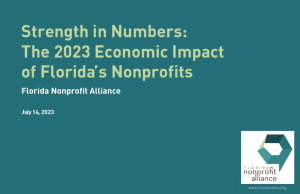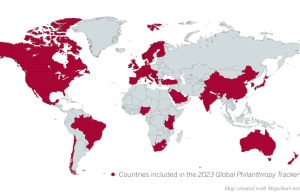As interest in nonprofit mergers grows, so do the myths surrounding them. In the nonprofit sector, mergers carry the stigma of for-profit experiences. This is understandable, considering some of the legendary train wrecks of for-profit mergers.
Many people reject them on that basis alone. Decision-making gets skewed when myths dominate thinking instead of clear-eyed analysis. This is a good time to examine some of the more persistent ideas about mergers in the nonprofit sector.
The increase in mergers is a product of an economic downturn. Although it is logical to associate the increase in merger activity with an economic downturn, the fact is that many nonprofit resources are currently locked in outdated corporate structures and aging program models. While a downturn is making mergers seem like a logical choice, it is only a catalyzing agent for trends that were already under way.
We’ll save administrative costs. The most persistent myth about nonprofit mergers is that they will save administrative costs. It is possible, but maybe not. Many well-meaning outsiders looking in on the nonprofit sector conclude that there are “too many nonprofits” and that there should be a lot of mergers to save money.
This myth mostly taps into everyone’s shared distaste for spending more money on administrative costs than is absolutely necessary. There is no constituency for wasteful overhead spending, so it’s a risk-free proposition.
Let’s look at the economic realities of nonprofits and their mergers. The majority of nonprofit, public charities have revenue barely into six figures, and most rarely clear even $2 million per year. Many pressures already keep administrative spending low, so trimming even a small slice of that amount is a nearly heroic accomplishment. Those entertaining a merger with the primary idea of achieving major administrative savings will almost certainly be disappointed.
More important, any merger where the chief goal is to achieve, say, $20,000 in administrative savings, is quickly going to seem like cruel and unusual punishment to those trying to make it happen. At some point they’ll likely stop, look around, and ask each other “we’re doing all this just to save $20,000?” It’s better to have a lofty strategic goal and be realistic about administrative savings.
It’s more likely that any savings will show up as more bang for the same buck. Only when one of the entities is much larger than the other and has far more established and efficient administrative systems will there likely be significant administrative savings.
There will be massive job cuts. The second most pervasive myth about nonprofit mergers is that they lead to massive job losses. This one is largely a carryover from mergers in the for-profit sector and the simplistic media coverage they usually get.

Investors generally like mergers but they dislike the dip in stock prices they can bring. CEOs need to produce a quick offset to the additional cost of the merger, and the fastest way to do that is to lay off staff.
The real heart of a merger is pretty unglamorous stuff, but the local television news reporter gets a ready-made, instantly understandable story, and that becomes the lead. Interestingly, it might be the announcement itself that they’re counting on to reassure investors. One study tracked layoff announcements from The Wall Street Journal and calculated that if all of the announced job cuts had actually happened, the unemployment rate would have been 50 percent.
In the nonprofit sector there is nothing comparable to investor pressure so there is no inherent pressure to cut jobs. There might be incidental job losses, but any major level of job loss that occurs during a nonprofit merger was probably going to happen anyway. In fact, a merger might actually reduce some of those losses if it promotes more efficient service delivery models.
We’ll lose our identity. Of all the merger myths in this sector, this is one of the least well understood. For practical purposes, “identity” means “brand,” and managing brands is one thing that the nonprofit sector is just beginning to master.
In the days when the prevailing nonprofit model was one-corporation-one-site- one-brand, this might have been a legitimate fear. But many nonprofits are learning that it is possible and sometimes even desirable to have multiple brands under the same roof. The decision to merge corporate structures is not the same thing as the decision to merge brands.
Let’s figure out the structure first. Once the initial exploratory discussions are over, many board members and some CEOs want to jump right into a discussion about a desirable corporate structure. That’s a big mistake.
Form should follow function. Decide what you want the merger to accomplish and be clear about your shared assessments and desires. Only then is it worth having a discussion about structure.
Shhhh. Don’t tell anyone. For-profit mergers are done in secrecy because they have to be. Large amounts of money are often made or lost on swings in stock prices, and there are laws and regulations governing what merger planners can say. Premature disclosures can sink a deal, and unauthorized outsiders (and insiders) are always willing to try to cash in on a tip.
Nonprofit mergers might well have to start out in secrecy for vaguely similar reasons. No nonprofit wants potentially damaging rumors to scare off donors or unnecessarily alarm government funders. And, the wrong kind of disclosure can create staff anxiety.
But if the best nonprofit mergers are decided from the top down, they must be implemented from the bottom up. Owning the company in a for-profit context confers “now-hear-this” authority. But in the nonprofit sector, authority is diffuse and employee buy-in and good will are essential for implementation.
Nonprofits can often manage the message effectively to external stakeholders, such as donors and even the media. Without the lost-jobs theme, nonprofit mergers take on less urgency for most media outlets. Even today, when the mainstream media picks up on stories about nonprofit mergers, the treatment tends to paint nonprofits as a monolithic industry, with specific mergers used as illustrations of broad trends rather than as the story itself.
Only failing organizations merge. Ironically, this tends to be a self-fulfilling myth. If they do not clearly understand the implications of their financial condition, leaders at many struggling nonprofits tend to hold on longer than they should. By the time they are finally ready to consider the idea it could be too late to salvage the programs.
The result is that the first wave of mergers in a given area does tend to involve stronger organizations taking over weaker ones, so that becomes the prevailing imagery. But combining an organization with a lot of problems with another, healthier organization just produces a larger organization with a lot of problems to solve. The most constructive use of mergers is not to rescue organizations in trouble — which might be able to be done in other ways — but to strengthen community capacity by building nonprofit organizational strength.
Mergers are simply another leadership tool. Reflexive loyalty to unneeded corporate structures or to program models in need of innovation is not a virtue. It’s time to lighten the baggage of mythology.
Tom McLaughlin is the founder of the nonprofit-oriented consulting firm McLaughlin & Associates and the author of “Streetsmart Financial Basics for Nonprofit Managers” (4th edition), published by Wiley. His email is [email protected]












